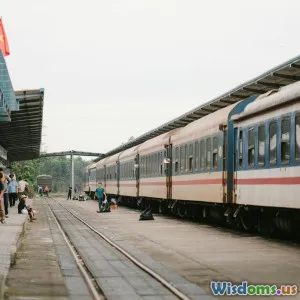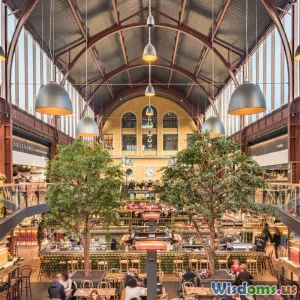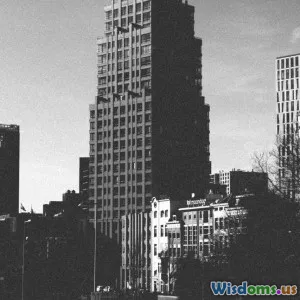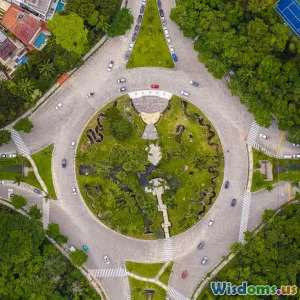
Why Bike Lanes Are Transforming City Community Life
7 min read Discover how bike lanes are revitalizing cities by fostering safety, health, social connections, and sustainability for diverse communities. (0 Reviews)
Why Bike Lanes Are Transforming City Community Life
Introduction: More Than Just a Line on the Road
Imagine strolling through your city, noticing families on bikes laughing together, seniors pedaling with ease, and children safely cycling to school. Cafés spill out onto widened sidewalks, local businesses thrive, and pollution levels drop. Are bike lanes responsible for this urban renaissance? Increasingly, the answer is yes. Once considered a niche or even controversial addition to roads dominated by cars, bike lanes are now at the heart of a global urban transformation. But why, and how, are these simple strips of pavement revolutionizing the places we call home?
This article dives deep into the real, measurable impact of bike lanes on urban community life, unpacking the evidence, surprising benefits, and powerful examples reshaping cities for the better—from Copenhagen to Bogota and New York City to Fort Worth. If you think bike lanes are just for cyclists, think again.
The Shift: Why Cities Are Moving Toward Bikes
Urban planners worldwide confront daunting problems: rising congestion, chronic air pollution, road safety concerns, increasing social disconnection, and growing health crises related to inactivity. Bike lanes—the defined strips dedicated to cycling—offer a multidimensional solution.
Countries like the Netherlands and Denmark have long built their urban transportation around biking. But the past decade has seen a surge in bike infrastructure in cities less known for their cycling culture. According to the National Association of City Transportation Officials (NACTO), US cities alone added over 11,000 new miles of bike lanes from 2009 to 2023.
Why the explosion of interest? Data consistently shows the benefits go far beyond just facilitating bicycle movement. Cities are, quite literally, being transformed.
Enabling Safe and Accessible Streets
Shifting the Safety Paradigm
"People won't bike if they don't feel safe," says Jan Gehl, the famed Danish urban designer. Safe infrastructure is fundamental to encouraging new riders.
Protected and well-designed bike lanes yield dramatic results in safety:
- New York City saw a 40% drop in injuries along streets where protected bike lanes were installed (NYC DOT, 2014).
- Seville, Spain turned a 12-km network into 120 km within five years, quadrupling cycling rates and consistently lowering accident rates.
Traditional roads prioritize vehicles, often creating hazardous conditions for less-protected road users. Dedicated, separated bike paths not only physically protect cyclists from traffic but also visually signal their legitimacy—and priority—to drivers.
Inviting All Ages and Abilities
When bike lanes are segregated from vehicle traffic, children, seniors, and people with disabilities find city streets accessible in new ways. In the Netherlands, where separated paths are the norm, 25% of all trips for those over 65 are made by bicycle (Fietsberaad, 2007).
Real-World Story: In Fort Worth, Texas—historically car-centric—installation of the Trinity Trails and new bike lanes correlated with a 65% increase in repeat ridership, with family cycling trips up 34% in three years (North Central Texas Council of Governments, 2022).
Building Social Bonds and Community Pride
More Encounters, More Connection
Cars isolate, bikes connect. On a bike, urban dwellers interact—not just with other riders, but also with pedestrians and shopkeepers. Researchers from the University of Alberta found that cyclists were twice as likely as drivers to greet or chat with strangers during urban commutes.
Bike Lanes as Public Spaces
As cycling increases, streets change. Sidewalk spaces expand, parklets and outdoor dining become possible, and pop-up events utilize the new slow zones. Bogota’s famous Sunday “Ciclovía” temporarily closes over 70 miles of roads for people-powered activities, engaging up to 2 million citizens weekly. Over time, permanent bike-lane improvements have redefined city life beyond weekly events.
Showcasing Local Identity
Vibrant bike lanes often feature unique art and local design, reflecting a city’s character and pride. Toronto’s Bloor Street separated bike lanes became a canvas for local artists, inviting more foot-and-wheel exploration and making cycling “part of what it means to be a Torontonian.”
Sparking Local Economic Growth
Reclaiming Streets for Small Business
Concerns that removing car lanes would hurt businesses have been thoroughly tested. In the majority of cases, the opposite happens. A report by the New York City Department of Transportation found that sales for local businesses soared by up to 49% after protected bike lanes were installed on Ninth Avenue—not post-pilot, but within their first year.
Other cities report similar Commercial District successes:
- Portland, Oregon: Businesses on streets with new bike lanes witnessed up to four times more sales growth than comparable non-bike-lane streets (Portland Bureau of Transportation, 2012).
- Melbourne, Australia: Following the conversion of parking to bike lanes, shopkeeper foot traffic increased by 20% (City of Melbourne Study, 2016).
Bicycles Mean Repeat Local Customers
Cyclists—often dismissed as
Rate the Post
User Reviews
Popular Posts




















